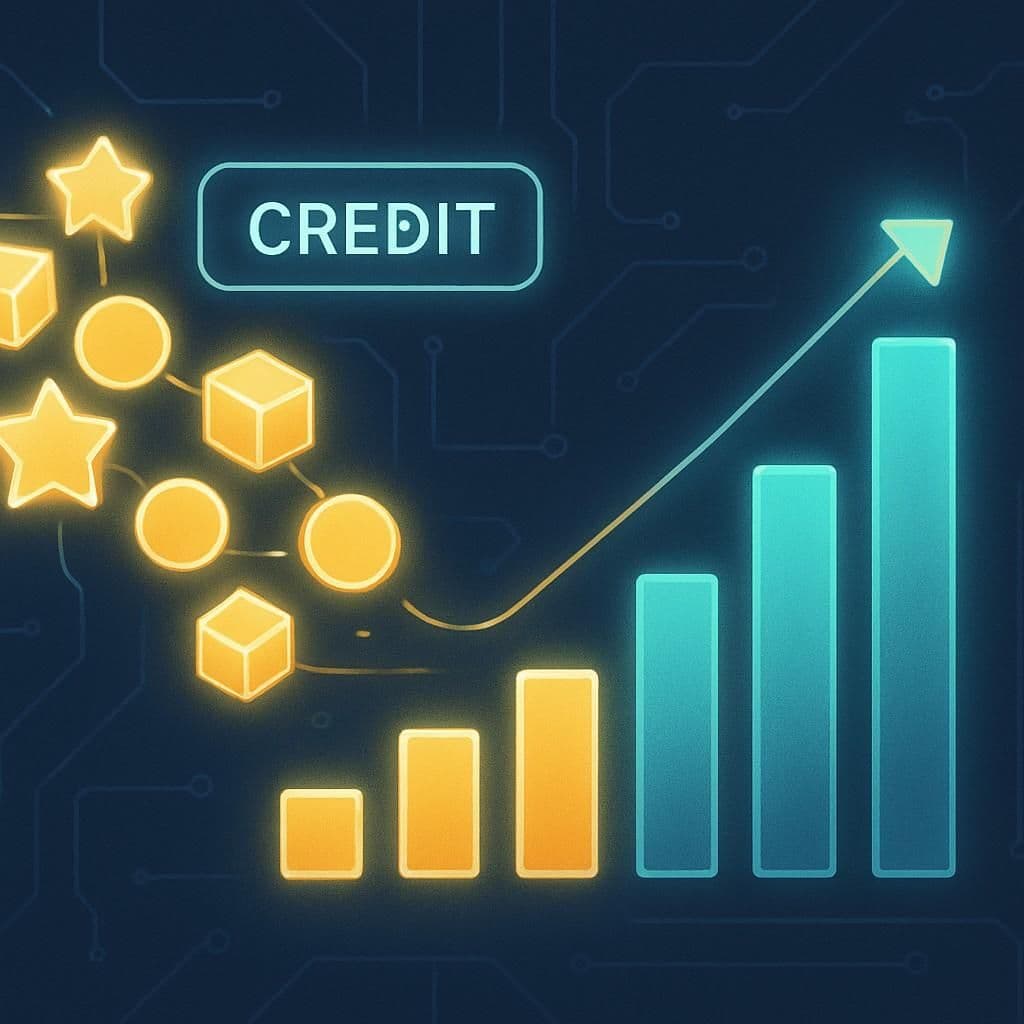- By Alex Catalyst
- 0 Comments
 Tech Stacks
Tech Stacks
The Credit System Revolution: How to Quantify Employee Contribution (and Boost Motivation)
We have a problem in the modern workplace, especially in the era of remote and hybrid teams: We can’t accurately measure contribution.
We reward people based on visibility, face time, or simply whoever is the loudest champion of their own work. The quiet architect who debugs a critical system or the behind-the-scenes coordinator who saves a project from collapse often gets overlooked.
This invisible work leads to demotivation, burnout, and—eventually—the loss of your best talent.
The solution is radical, simple, and transparent: The Employee Credit System.
Why Traditional Metrics Are Failing Your Team
Current methods of quantifying contribution are broken:
- Hours Worked: An outdated measure. Busywork doesn't equal value.
- Vanity Metrics (Likes, Views, Shares): These measure popularity, not core business impact.
- Annual Reviews: Highly subjective, prone to recency bias, and too late to motivate behavior.
We need a system that translates effort, impact, and skill into a universal, objective currency that every employee can understand and track.
Introducing the Employee Credit System (ECS)
The Employee Credit System is a framework where every measurable unit of contribution is assigned a "Credit" value. These credits are transparent, cumulative, and directly tie back to rewards, recognition, and career progression.
Think of it like getting "credits" in college—you need a certain number to graduate, and different courses carry different weights.
How to Assign "Credit" Value to Tasks
The magic of the ECS is in its scoring. You assign Credits based on three primary factors: Impact, Effort, and Skill.
| Contribution Type | Example Task | Credit Weight Factor |
|---|---|---|
| High Impact / High Effort | Launching a new product feature or securing a major client. | 5x (High Credit Value) |
| High Impact / Low Effort | A simple fix that prevents a major system outage. | 4x (High Credit Value - This is a game-changer) |
| Low Impact / High Effort | Extensive, required documentation updates or minor regulatory compliance. | 2x (Medium Credit Value) |
| Team Support / Hidden Work | Mentoring a junior colleague, fixing a colleague’s broken script. | 3x (The "Hidden Hero" Factor) |
Export to Sheets
The key takeaway is that Credit is tied to value, not just time. A five-minute fix that saves the company $10,000 earns more credit than ten hours of non-critical design work.
The Power of Transparency: Making Contribution Visible
The ECS works because it’s not a secret manager spreadsheet. It's a public dashboard (or a simple tab in your project management tool) visible to the entire team.
Imagine:
- The Weekly Leaderboard: A visible (optional) tally of credits earned. This isn't about shaming; it’s about acknowledging activity and setting a new, objective standard for "winning."
- Credit-Based Recognition: Instead of a generic "Employee of the Month" based on gut feeling, the award goes to the person who achieved the highest Credit Score for a given quarter.
- Compensation and Promotion: When it comes time for reviews, the conversation shifts from "How have you been doing?" to "You earned 1,200 Credits this year, which is 20% above the team average. Let's discuss your advancement."
The Special Case: Quantifying Remote Work
In a remote environment, the ECS is a lifesaver. It completely eliminates the "Are they actually working?" anxiety, as contribution is measured solely by completed, high-value, high-credit tasks.
The person who finishes their high-credit work in four hours and spends the rest of the day volunteering is more valuable than the person who spends eight hours spinning their wheels on low-credit tasks. The system reinforces results, not attendance.
Your Roadmap to Starting the Credit Revolution
You don't need a complex software platform to start. You need commitment and clarity.
- Define Your Credit Rubric: Start with a pilot project. Meet with key leaders and define the 5-10 most common types of work and assign them a Credit multiplier (1x to 5x).
- Integrate with Existing Tools: Use a custom field in Asana, Trello, or Jira to log the Credit value when a task is marked "Done."
- Start Small, Celebrate Big: Focus on recognition first. Use the Credit Score to call out "Hidden Heroes" in your weekly meeting. Show how the person who quietly automated a reporting process earned more credit than the person who just scheduled meetings.
- Iterate for Fairness: The system must be dynamic. Review the credit values every quarter to ensure they still reflect the company's changing priorities.
The Employee Credit System isn't just a new metric; it's a new mindset. It shifts your culture from rewarding effort and visibility to celebrating quantifiable, high-value impact. It’s the definitive way to quantify employee contribution, boost motivation, and build a truly fair workplace.





0 Comments